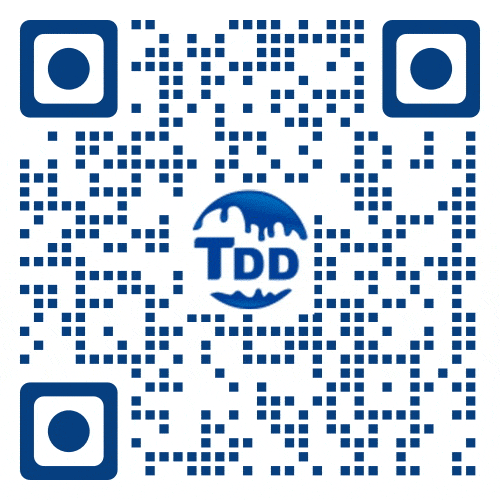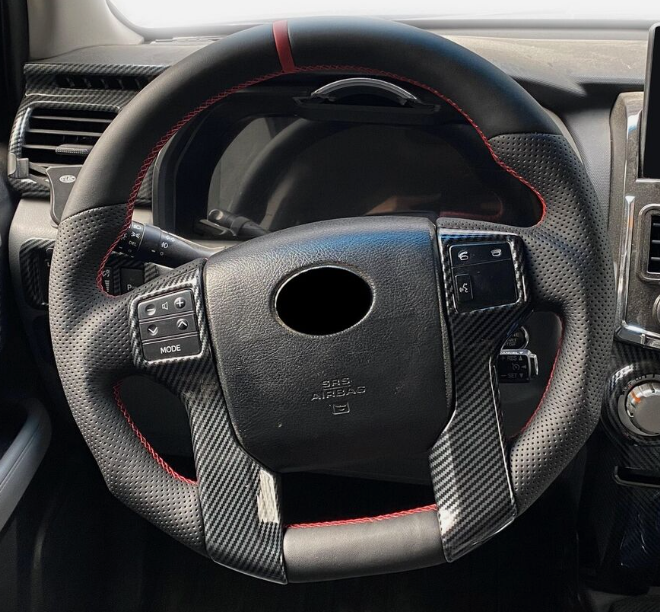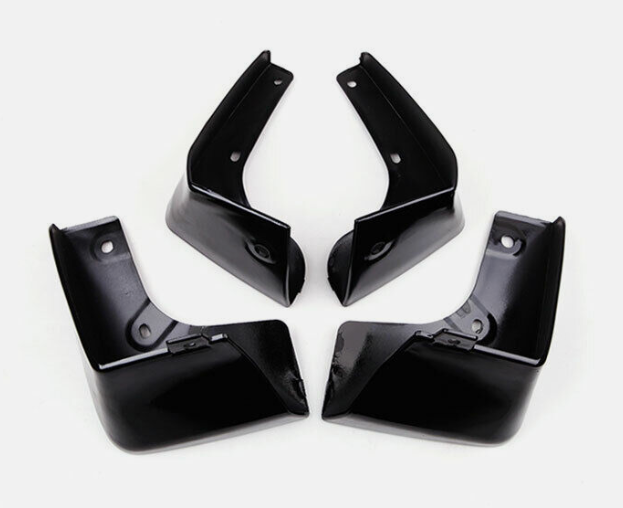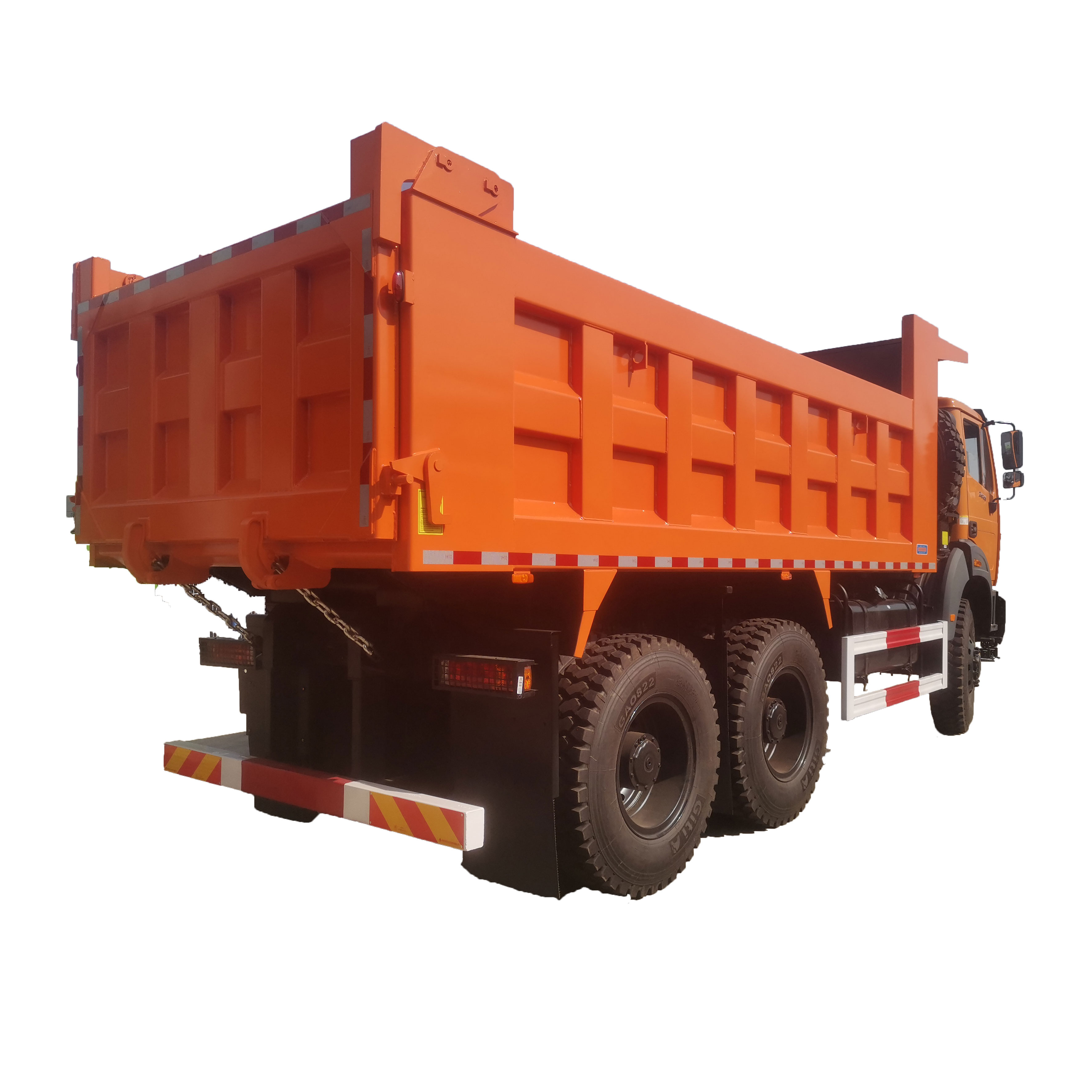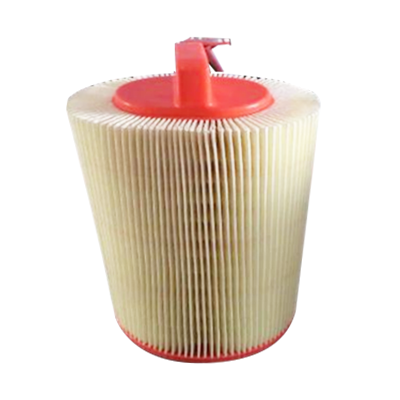Pigments whose main components are inorganic substances. Almost all inorganic pigments are chemical compounds, often complex mixtures, in which metals are part of the molecule.
With the recovery of the global economy, domestic and foreign construction and building materials, coatings, plastics, inks and other industries have experienced rapid growth, and the demand for inorganic pigments has also increased rapidly. With the rapid development of the coating industry, inorganic pigments, one of its main raw materials, have made great progress, of which titanium dioxide and iron oxide account for the largest proportion.
During the “Twelfth Five-Year Plan” period, Zhiyan Data Research Center stated that the country will implement total control of heavy metals and other characteristic pollutants in some areas. With the increasingly stringent national environmental protection regulations and the growing demand for environmentally friendly inorganic pigments in downstream fields, During the “Twelfth Five-Year Plan” period, the research and development, production and application of environmentally friendly inorganic pigments will surely make great progress. At present, under the strict environmental protection regulations in many countries, environmentally friendly inorganic pigments that are non-toxic and can replace traditional lead and cadmium pigments are becoming popular. China is also actively developing environmentally friendly inorganic pigments, which brings hope to downstream industrial applications and the industry prospects are promising.
Improving the environmental protection and safety level of inorganic pigments and realizing lead-free has been widely recognized by enterprises in the industry, and the development direction of environmentally friendly inorganic pigments is the general trend.

basic introduction #
Inorganic pigments are oxides of non-ferrous metals, or some metal-insoluble metal salts. Inorganic pigments are divided into natural inorganic pigments and artificial inorganic pigments. Natural inorganic pigments are mineral pigments.
Pigments made from natural minerals or inorganic compounds. Natural mineral pigments generally have lower purity and darker color, but are cheap. Synthetic inorganic pigments have a complete spectrum of colors, bright and pure colors, and strong hiding power.
Humans have used inorganic pigments for a long time. Soot, chalk, colored earth, and natural iron oxide have been used as pigments in prehistoric times. From 3000 BC to 2000 BC, the production method of lead white was already mastered. Around 200 BC, China began to use artificially refined silver vermilion (HgS) as a pigment. In 1704, Diesbach in Germany invented a method for manufacturing the color pigment Prussian blue [a dark blue pigment, the main component is Fe4[Fe(CN)6]3· xH2O ]. In 1809, France’s L.-N. Walkerland made chrome yellow. In 1831, France’s IB Guimet built a factory near Lyon to produce ultramarine. In 1874, the Widnes factory owned by the British Austen Zinc White Company produced zinc barium white. In 1916, titanium composite pigments (containing 25% TiO2) and in 1923, pure titanium dioxide ( titanium white ) were put into production, which promoted the level of pigment production a big step forward. At present, the chromatogram of inorganic pigments is basically complete.
characteristic #
Inorganic pigments are light-fast, heat-resistant, weather-resistant, solvent-resistant, and have strong hiding power. However, they do not have a complete chromatogram , low tinting power, poor color brightness, and some metal salts and oxides are highly toxic.
Mechanism of action #
The basic optical properties and pigment properties of inorganic pigments are mainly determined by the following three aspects:
①The difference in refractive index between the pigment and the dispersion medium;
②Light absorbed by the solid (including impurities in the solid);
③Particle size and particle size distribution. The particle size and particle size distribution can be improved through surface treatment.
During the pigment production process, no matter how finely the pigment powder is ground, it will always contain some aggregated and flocculated particles. During transportation and storage, pigments will further flocculate into large particles due to extrusion and moisture. Moreover, the finer the pigment, the larger the surface area and the higher the surface energy, the easier it is to flocculate together. If treated with appropriate surfactants, these large flocculated particles can be easily dispersed during use. The dispersion mechanism is mainly as follows:
1 .moisturizing
The dispersion of inorganic pigment powder in liquid mainly goes through the following three stages: ① Wetting of the powder, the liquid must not only wet the surface of the powder, but also displace the air and moisture between the powder particles; ② Displace the particles through the moistened powder After the air and moisture are removed, the flocs and aggregates in the pigment powder are destroyed; ③ The moistened and destroyed flocs and aggregate powders maintain a stable dispersed state in the liquid. In other words, dispersion is a process of wetting-dispersing-keeping the dispersion stable. Under normal circumstances, inorganic pigments are rarely dried before use. In addition to being mixed with air, the surface of the pigment also absorbs a layer of water film. The amount of water usually adsorbed on the pigment surface is equivalent to the amount of water required to form a monomolecular film on the solid surface. For example, the surface area of each gram of TiO 2 is 10 m 2 and the thickness of the water molecule adsorption layer is 10 × 10 -10 m. The amount of water required for the monomolecular film is about 0.3% of the weight of the pigment, so the moisture content in the pigment also affects its dispersion performance. One of the main factors. Whether a solid is wetted or not can be judged based on its contact angle. A contact angle of 0° means complete wetting and the liquid is completely spread on the surface of the solid; a contact angle of 180° means it is not wetted at all and the liquid adheres to the surface in the form of water beads. solid surface.
Whether a solid can be well wetted in a liquid can be judged not only by the size of the contact angle, but also by measuring the size of its wetting heat. Generally, hydrophilic powders (such as TiO 2 ) have a large wetting heat in polar liquids and in non-polar liquids. The heat of wetting in polar liquids is small, while the heat of wetting of hydrophobic powders in polar and non-polar liquids is roughly the same.
The settling speed and settling volume of solid powder in liquid can also be used to judge the degree of wetting (see Table 1). Solids with high polarity such as TiO 2 have a small settling volume in highly polar solutions. The smaller the polarity, the larger the solution; the non-polar solid powder generally has a larger sedimentation volume. After treatment by adding surfactant, the surfactant molecules are strongly oriented and adsorbed on the surface of the solid, which helps to reduce the surface tension of the liquid and improve its wetting and dispersing properties.
2 .Electric repulsion (ξ potential)
The dispersion and dispersion stability of inorganic pigments in aqueous solutions mainly depend on their electrical repulsion in water, that is, the size of the ξ potential.
Electric repulsion uses the repulsion of charges to maintain dispersion stability.
Surfactants can ionize a large number of negatively charged (or positively charged) ions in aqueous solution, which are firmly adsorbed on the surface of pigment particles, so that these particles have the same charge, and other oppositely charged ions can freely diffuse into the liquid medium. Around it, a diffusion layer of charged ions (electric double layer) is formed. The potential difference between the two layers of ions from the solid surface to the farthest point of the diffusion layer (that is, where the opposite charge is 0) is called the ξ potential. The electrostatic repulsion between particles comes from this. These particles with the same charge repel each other once they come into contact, thereby maintaining the stability of the dispersed system, which is the famous DLVO theory.
In the case of electric repulsion, surfactants must have high ionization properties. Anionic surfactants and some inorganic dielectrics are usually used, such as: tripotassium polyphosphate, potassium pyrophosphate, sodium polyphosphate, alkyl aryl sulfonate sodium acid, sodium methylene naphthalene sulfonate, sodium polycarboxylate, etc.
3 .Steric hindrance effect (or entropy effect)
When the pigment is dispersed in a non-aqueous medium, the possibility of the above-mentioned ionic reaction is greatly eliminated. The non-ionic surfactant does not ionize in water. In this case, the role of the surfactant is called steric hindrance effect or entropy effect. Because surfactants can be directionally adsorbed on the surface of pigment particles to form a single-molecule adsorption layer, this directional buffer layer can prevent the aggregation between particles and thereby maintain the stability of the dispersion system (also known as protective colloids or micelles).
As the concentration of surfactant increases, the entropy of the surfactant molecule group on the pigment surface will decrease and its movement will be restricted. The closer and more compressed the pigment particles are, the further the entropy will decrease, which is beneficial to the stability of the dispersion system.
Classification #
Sort by color #
Inorganic color pigments can be divided into two categories: achromatic pigments and color pigments. Achromatic pigments include a range of pigments from white to gray to black that differ only in the amount of reflected light, that is, in brightness. Color pigments can selectively absorb light of certain wavelengths and reflect light of other wavelengths to present various colors.
Black pigment is the most important pigment after white pigment. The main variety is carbon black. The properties of carbon black for pigments are different from those used for rubber processing. The main quality indicators of pigment carbon black are blackness and hue. Carbon black is an inorganic pigment colorant for plastics second only to titanium dioxide. Carbon black is classified according to processing methods and comes in many varieties. When used as a pigment, it is generally called “pigment carbon black”. Carbon black not only has coloring properties, but also has excellent weather resistance and thermal oxidation resistance.
Red pigment: The red pigment among inorganic pigments is mainly iron oxide red. Iron oxide comes in a variety of colors, from yellow to red, brown to black. Iron oxide red is the most common iron oxide pigment. It has good hiding power, tinting power, chemical resistance, color retention, dispersion, and is relatively cheap. Iron oxide red is used in the production of floor paint and ship paint. Due to its significant anti-rust properties, it is also the main raw material for making anti-rust paint and primers. When the particles of iron oxide red are ground to ≤0.01μm, the hiding power of the pigment in organic media decreases significantly. This pigment is called transparent iron oxide and is used to make transparent paint or metallic glitter paint. It is more efficient than using organic dyes. Better color retention.
Yellow pigments mainly include lead chromium yellow (lead chromate), zinc chromium yellow (zinc chromate), cadmium yellow (cadmium sulfide) and iron yellow (hydrated iron oxide). Among them, lead chrome yellow is the most widely used and has the largest output. The world’s annual output is about 180kt, and China’s annual output is about 10kt. Lead chrome yellow has strong hiding power, bright color, and is easy to disperse, but it easily darkens under sunlight. The hiding power and tinting power of zinc chrome yellow are worse than that of lead chrome yellow, but it is lighter in color and has good light resistance. Cadmium yellow has good heat resistance, light resistance, and bright color, but its tinting power and hiding power are not as good as lead chromium yellow, and its cost is high, so its application is limited. Lead, chromium yellow and cadmium yellow both contain heavy metals and cannot be used for coloring children’s toys, cultural and educational supplies and food packaging. Iron yellow color is darker, but its durability, dispersion, hiding power, heat resistance, chemical resistance, and alkali resistance are very good, and it is cheap, so it is widely used for coloring building materials.
Lead chromium yellow can be produced by combining lead nitrate or lead acetate with sodium dichromate (or potassium dichromate), sodium hydroxide, aluminum sulfate and other raw materials according to different ratios and different reaction conditions. yellow.
Zinc chrome yellow is also called zinc yellow. Suspend zinc oxide in water, and then add potassium dichromate and chromic acid to obtain basic potassium zinc chromate K2CrO4·3ZnCrO4·Zn(OH)2, which is zinc chromium yellow pigment. Sulfuric acid or hydrochloric acid can also be used to replace part of the chromic acid, but the generated potassium sulfate or potassium chloride must be thoroughly washed away before filtering and drying. Basic potassium zinc chromate can be used as lemon yellow pigment, or it can be combined with iron oxide red to make primer. Another kind of zinc chromium yellow is produced by reacting zinc oxide with chromic acid. It is also called tetrabasic zinc chromate ZnCrO4·4Zn(OH)2 and is mostly used to make phosphating primers.
Cadmium yellow There are two types of cadmium yellow: pure cadmium yellow and cadmium yellow co-precipitated with barium sulfate. Add sodium sulfide or a mixed solution of sodium sulfide and sodium selenide to the aqueous solution of cadmium salt to precipitate cadmium sulfide yellow or cadmium sulfide red. After washing and filtering, it is roasted at 500~700°C in a rotary kiln (see kiln ) . That is, cadmium yellow or cadmium red pigments with different colors from lemon yellow to orange-red are obtained.
Iron yellow natural iron oxide yellow is a kind of hydrated iron oxide containing various impurities, mainly silicates. In the past, the preparation of iron oxide yellow was based on waste iron sludge from the reduction of nitrobenzene to produce aniline . Another production method is to heat ferrous sulfate for hydration in the presence of iron and oxygen, which produces iron oxide yellow. Iron oxide yellow has poor thermal stability. When heated to above 180°C, it dehydrates and turns into iron oxide red.
Green pigments mainly include chromium oxide green and lead chromium green. Chromium oxide green has excellent light resistance, heat resistance, and chemical resistance, but its color is darker and its tinting power and hiding power are poor. The durability and heat resistance of lead chrome green are not as good as those of chromium oxide green, but it has bright color, good dispersion and is easy to process. Since it contains toxic heavy metals, its usage has been gradually reduced since the advent of organic pigments such as phthalocyanine green.
Chromium oxide green, also known as chromium trioxide, is made by roasting chromium anhydride , sodium dichromate (or potassium, ammonium salt) and carbon or sulfur at high temperature. Its color ranges from bright green to dark green. It is mostly used for coloring metallurgical products and cement. Its particle hardness is high and can be used as a polishing agent for optical materials and metal grinding; its spectral reflection characteristics are very close to chlorophyll, so it can be used in military camouflage paint.
Lead chrome green is a mixture of chrome yellow and iron blue. It is made by adding iron blue wet slurry during the manufacturing process of chrome yellow. By adjusting the amount of iron blue added, you can get from yellow light green (2%~3% iron blue) to Dark green (60%~65% iron blue) green pigments of various colors. Lead chrome green can be used in general paints. There is also a mixture of chrome yellow and phthalocyanine blue (see organic pigments ), also called lead chrome green. This pigment has bright color and good other properties.
Blue pigments mainly include iron blue, cobalt blue, ultramarine and other varieties. Among them, ultramarine blue has the largest yield. Ultramarine blue is resistant to alkali but not acid, has bright and bright color, and is resistant to high temperatures. Iron blue is acid-resistant and not alkali-resistant. Its hiding power and tinting power are higher than ultramarine blue, and its durability is worse than ultramarine blue. Since phthalocyanine blue was put on the market, the amount of iron blue has been declining year by year because its tinting power is twice as high as that of iron blue and its other properties are good. Cobalt blue is resistant to high temperatures and has excellent light resistance, but its tinting power and hiding power are slightly poor, its price is high, and its uses are limited.
Iron blue is produced by reacting ferrous sulfate, yellow blood salt (potassium ferrocyanide), and ammonium sulfate to form a white slurry, which is then oxidized with chlorate. The cyan iron blue is called China blue, and the red iron blue is called milori blue. Iron blue is a hydrophilic pigment and has poor affinity with oils, resins and other media. Treatment with surfactants can improve its lipophilicity and easy grindability. The dark blue paint made of iron blue will have a better surface finish after exposure. It is easy to produce copper light phenomenon. Mainly used for manufacturing ink and cultural and educational supplies.
brown pigment
Iron oxide brownIron oxide brown
1. Product overview: Molecular formula Fe2O3·nH2O, iron brown blended product has the characteristics of iron oxide red and iron oxide yellow. Iron brown also has the main characteristics of large color range and strong adaptability. Compared with iron oxide red and iron yellow The scope of application is wider and more suitable for users.
2. Specifications and models: 610/686/860/868.
3. Usage: Widely used in colored cement bricks, coatings, paints, building materials, rubber, plastics and other fields.
4. Storage and transportation conditions: Store in a dry place, away from moisture, high temperatures, and isolated from acids and alkalis. According to the above storage conditions, the effective storage period of unopened products is three years.
Product name: Iron oxide brown Model: 610/686/860/868
Other categories #
Ultramarine is made from clay, sulfur, soda ash, Glauber’s salt, carbon black and quartz powder mixed according to different formulas, packed in clay pots, roasted at high temperatures, and then washed with water and other refining processes. Products are available in light blue to dark blue. After mixing with ammonium chloride and heat treatment, pink and purple pigments can be made. Used in painting pigments, rubber, plastics, coatings, etc. Ultramarine turns white when exposed to calcium hydroxide, so it cannot be used for cement coloring.
use #
The main purpose #
Inorganic pigments are widely used in coatings, plastics, synthetic fibers , rubber, building materials, cultural and educational supplies, painting pigments, inks, and paper.
other #
Glass, enamel , ceramics and other industrial production sectors.
development trend #
Trend one #
The research and development directions of new inorganic pigments in recent years are mainly: ①Develop composite pigments, such as brilliant blue (CoO·Cr2O3·Al2O3), titanium nickel yellow (TiO2·NiO·Sb2O3), etc. Adding chromium, cobalt, iron, zinc and other oxides to nickel and antimony titanates can produce yellow, green, blue, brown and other low-toxic to non-toxic pigments that are high temperature resistant, durable and chemical resistant. It has bright color and excellent performance, and can be used for coloring building materials, coatings, engineering plastics and preparing painting pigments with high durability requirements.
Trend two #
② Develop pigment particle surface treatment technology, using inorganic compounds or organic compounds to form a color film on the surface of the pigment particles, which can change the surface properties of the pigment particles, improve light resistance, heat resistance, wetting and other characteristics, expand the application area, and increase the use value.
③ Manufacture and process pigments so that users can apply them directly, saving a lot of grinding and processing costs.

